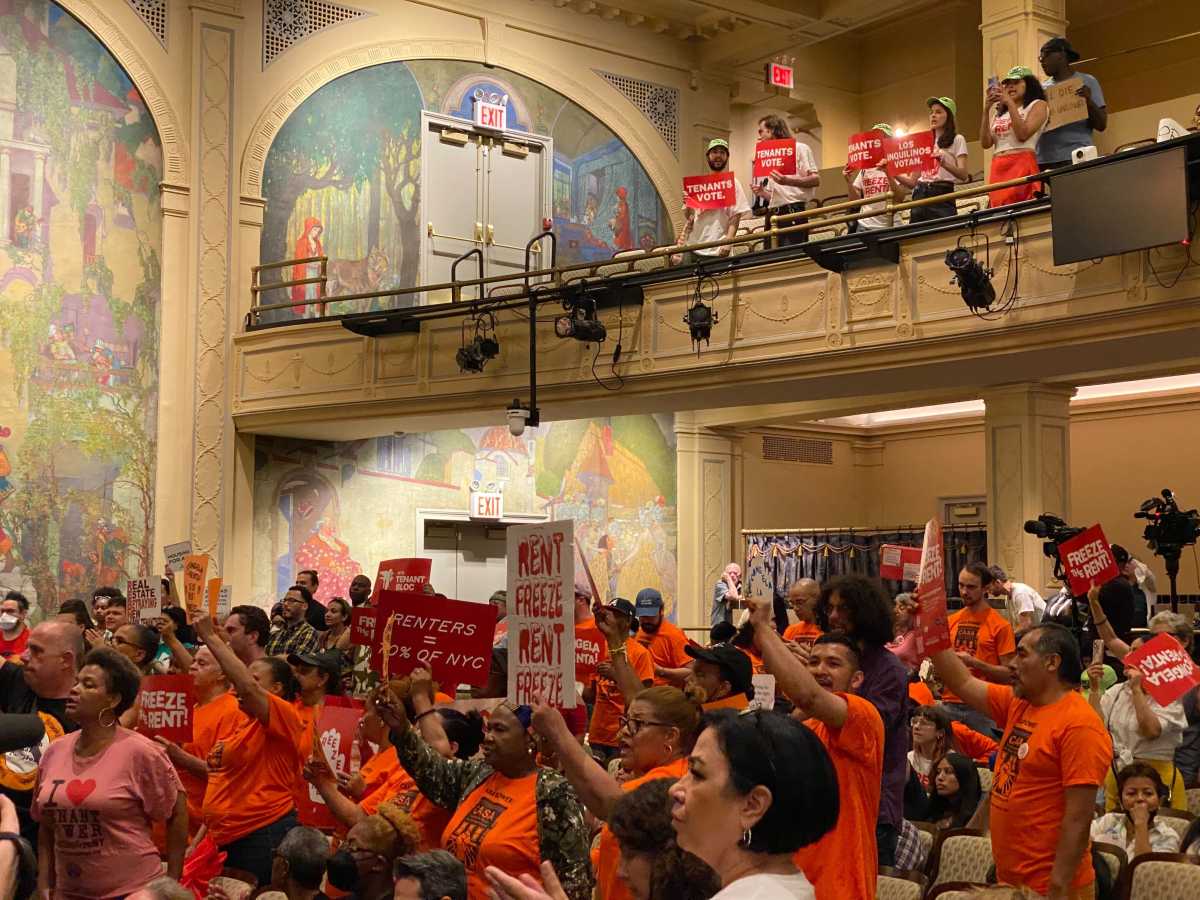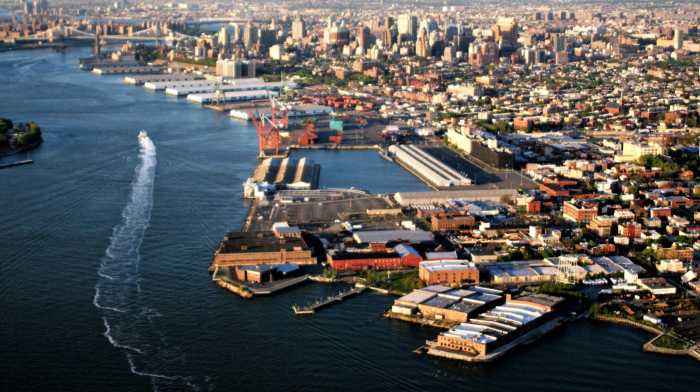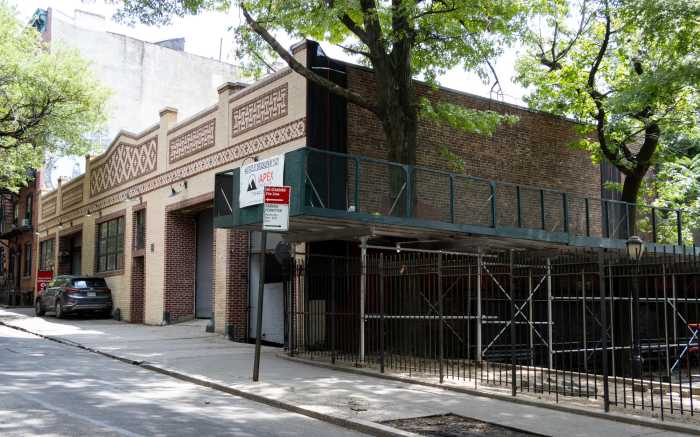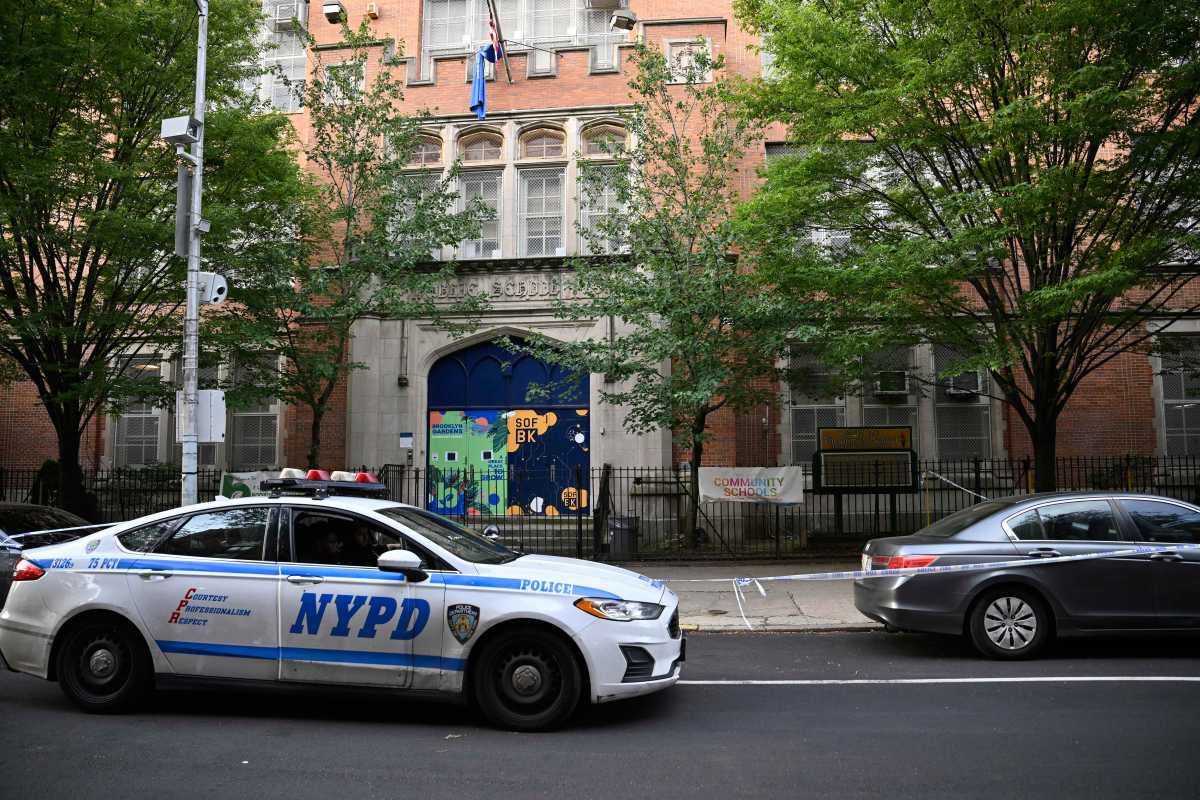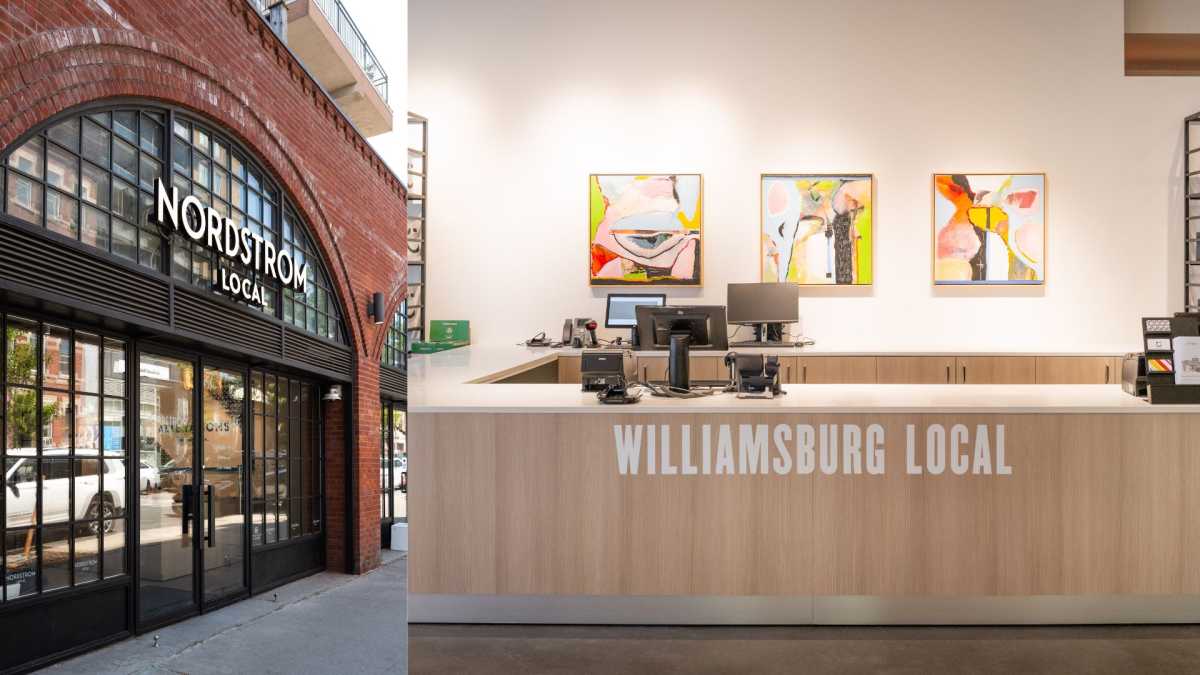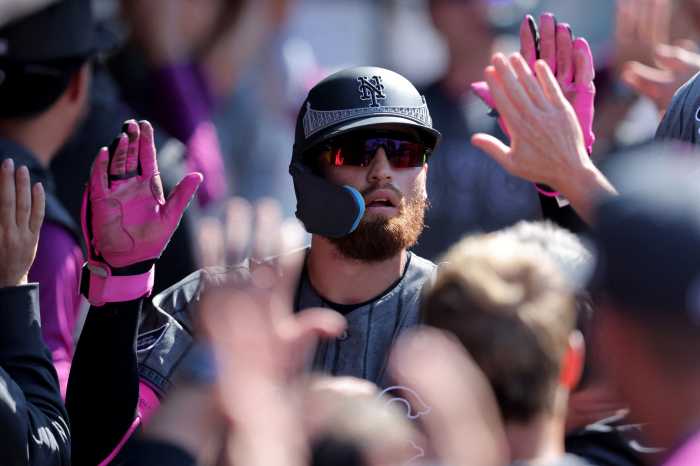Three community boards surrounding Bruce Ratner’s proposed Atlantic Yards mega-development held hastily scheduled, little-publicized and legally irrelevant public hearings last week to give Brooklynites a chance to vent.
Little was said that wasn’t said before at the Aug. 3 hearings.
Community Boards 2 and 6, which cover tony areas such as Brooklyn Heights, Park Slope and Fort Greene, heard almost universal opposition to the project. Community Board 8, which covers a much-less-well-off area extending from Prospect Heights to Brownsville, heard more support.
Community Board 2
Brooklyn Heights, Boerum Hill, DUMBO, Fort Greene
CB 2’s meeting featured familiar complaints against the project, plus a familiar new one: That the Empire State Development Corporation released its 2,000-page environmental review of Atlantic Yards during the summer and left too little time — just 66 days — for public review.
The hearing started off with a presentation by Forest City Ratner Vice President Jim Stuckey, making his first of three stops on the night. Stuckey defended the 16-skyscraper, arena, hotel, office space and 6,860-unit residential project on the grounds that it would create jobs, affordable housing and tax revenue while not unduly affecting the surrounding area.
After Stuckey, 29 area residents offered familiar reasons for opposing the project: its size and density; the traffic it would create; the supposedly undemocratic, state-run approval process; the public subsidies being handed to a private developer.
Only two community members spoke in support of the project. Surrounded by four fellow supporters in hard hats and orange vests, both said they supported the project because it would bring construction jobs.
Robert Perris, district manager of CB2, said the hearing was disappointing because the board is charged with seeking “technical” information about the DEIS, rather than merely compiling “general” complaints about Atlantic Yards.
“With the very short timetable that the state’s given us for responding … people haven’t had a chance to review the tremendous amount of information” in the DEIS, he said.
Community Board 6
Park Slope, Carroll Gardens, Red Hook, Cobble Hill
Fireworks erupted at this otherwise routine public hearing when a representative of a Ratner-backed church group slammed the CB 6 community for choosing to “ignore” the concerns of black people who support the project.
Omar Wilks, who identified himself as speaking on behalf of the Rev. Herbert Daughtry of the House of the Lord Pentecostal Church in Boerum Hill, delivered a fiery sermon in support of the project.
“Atlantic Yards is great for this community,” Wilks said, his voice rising quickly. “It will provide housing and jobs for black people, who this community has chosen to ignore.
“This community has chosen to forget about those in poverty [and] our youth who need jobs. What Community Benefits Agreement has this community signed with us?”
Wilks was referring to an agreement signed by Ratner and eight mostly black groups. Under the CBA, Ratner has given hundreds of thousands of dollars to these groups, which are barred under the contract from speaking against the project.
Other project supporters, including Forest City’s Stuckey, making his second appearance of the night, were far more muted.
Dozens of opponents of Atlantic Yards stuck to familiar themes, such as the immense scale of the project, its environmental impact, and the process by which Ratner was given the Long Island Rail Road yard site for $100 million less than its appraised value.
Community Board 8
Prospect Heights, Crown Heights, Ocean-Hill
The need for job-creating investment came up as both supporters and opponents of Bruce Ratner’s Atlantic Yards project called for the fallow rail yards to be developed.
Race and class divisions played out, as mostly white opponents spoke of the project’s negative environmental impact on the community and mostly black supporters complained of the negative impact of joblessness and high housing costs on their community.
“Things are not OK everywhere,” said Marie Louis of Brooklyn United for Innovative Local Development (BUILD), one of eight groups allied with Ratner.
“We aren’t benefiting from the development that is happening.”
Another supporter, Kevin Yard, called the project a “desperately needed” opportunity for the black community.
But opponent Diana Silverman called Ratner’s community outreach in central Brooklyn “cynical.”
“Call it the Ratner speculation project,” she said.
Fellow opponent David Rausch added, “It’s a bad idea to build Houston, Texas, in the middle of this community.”
Stuckey, completing his community board trifecta, praised Atlantic Yards’ affordable housing.


